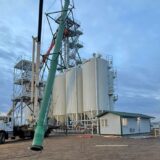Fire Prevention on Site: Practical Measures for Safer Industrial Workspaces
In any industrial or construction setting, the risk of fire is a very real concern. From welding sparks to flammable materials and temporary heating equipment, several factors can lead to dangerous situations if not properly managed. At Credence Construction Ltd, we understand the importance of maintaining not just quality and efficiency in our work, but also prioritizing the safety of every site we operate on. In this blog, we’ll explore essential practices for fire prevention on site, drawing insights from industry standards and the SCSA’s safety guidelines.
Understanding Fire Hazards on Industrial Sites
Construction and industrial environments are naturally prone to fire hazards. The combination of high-powered tools, combustible materials, and active personnel makes fire prevention a critical safety component. Some of the most common sources of fire on job sites include:
- Flammable liquids such as fuels, solvents, and paints
- Hot work processes like welding, cutting, and grinding
- Temporary heating systems
- Electrical equipment and faulty wiring
- Poor housekeeping and waste buildup
The Saskatchewan Construction Safety Association (SCSA) emphasizes that identifying these risks early is the first step in reducing the chances of fire-related incidents.
Key Fire Prevention Measures for Job Sites
Fire prevention is not a one-time effort—it’s a continuous process. Here are the most effective strategies that should be in place on every site:
1. Good Housekeeping Practices
Keeping the site clean and organized can significantly reduce fire hazards. Flammable materials should be disposed of properly, and oily rags must be stored in approved, self-closing metal containers. Clear access routes and exits should be maintained at all times.
2. Proper Storage of Flammable Materials
Ensure that flammable liquids and gases are stored in labeled, approved containers and kept in well-ventilated areas, away from ignition sources. Designate specific zones for storing these materials and restrict unauthorized access.
3. Equipment Maintenance and Usage
Regular inspections and maintenance of tools and equipment are essential. Tools must be CSA-approved and in good working condition. Equipment used for hot work should have appropriate guards and safety features in place.
4. Hot Work Safety
Hot work, such as welding or cutting, is one of the leading causes of construction site fires. The use of fire-resistant blankets, welding screens, and proper ventilation can help control the risk. A dedicated fire watch should be in place during and after hot work, especially in confined or enclosed areas. Consider implementing a Hot Work Permit system to formalize safety checks before the job begins.
5. Electrical Safety
All temporary and permanent electrical systems should be inspected routinely. Avoid overloading circuits, using damaged extension cords, or creating makeshift wiring setups. Only qualified electricians should handle electrical installations and repairs.
Emergency Preparedness
Fire prevention isn’t just about avoiding hazards; it’s also about being prepared when something goes wrong. Every site should have a detailed Fire Safety Plan that includes:
- Clearly marked and accessible fire extinguishers
- Emergency exit routes and muster points
- Fire alarm systems or alert methods
- First aid supplies and trained personnel
Conducting regular fire drills ensures everyone on site knows how to respond quickly and calmly. According to the SCSA, workers must be trained to use fire extinguishers and follow the fire evacuation plan confidently.
Responsibility Starts with the Team
Creating a fire-safe work environment is a team effort. Supervisors must enforce fire prevention protocols and lead by example. Workers should be encouraged to report unsafe conditions, follow procedures, and actively participate in safety meetings and drills.
At Credence Construction Ltd, we believe that safety is a shared responsibility. Our crew is trained to recognize risks, follow protocols, and maintain a safe working environment at all times.
Fire Prevention Is Part of Our Everyday Work
Whether we’re working on structural steel fabrication, scaffolding, or a repair and maintenance project, fire safety is built into our process. From routine tool inspections to pre-job safety planning, our approach combines expertise with a strong safety culture.
We also stay up-to-date with current safety guidelines, including those issued by the SCSA, to ensure compliance and best practices across every project we deliver.
Final Thoughts
Fire prevention on site is not just a legal obligation—it’s a vital part of running a responsible, professional operation. Proactive planning, daily habits, and team-wide commitment to safety can go a long way in protecting people, equipment, and infrastructure.
If you’re looking for an industrial contractor that puts safety first, Credence Construction Ltd is here to help. Let’s build something great—and safe—together.
Contact us today to learn more about our services and safety-first approach to construction and industrial solutions



